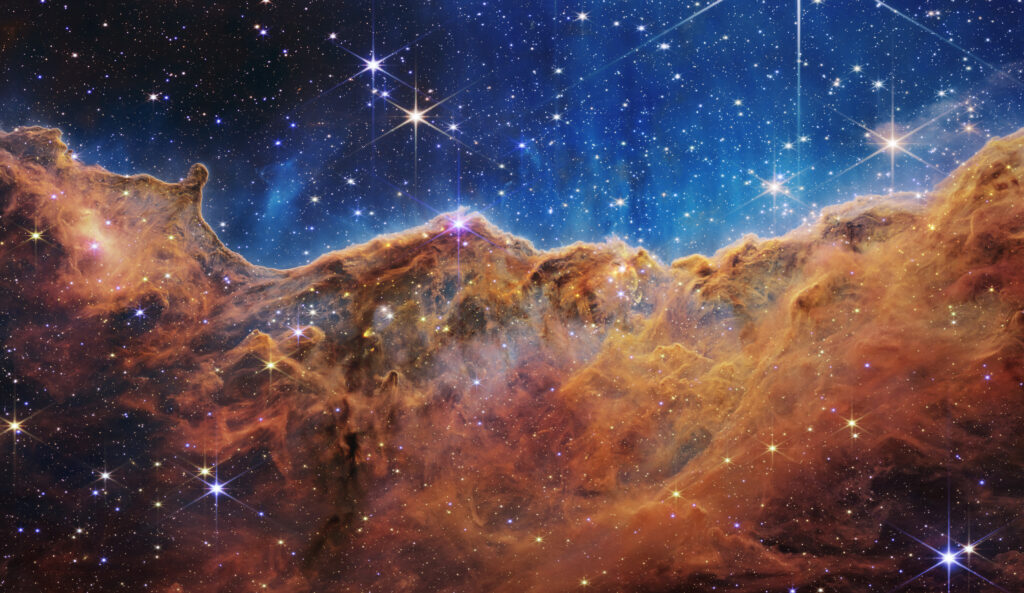The Carina Nebula is a bright, large emission nebula surrounding the star Eta Carinae located in the southern constellation Carina. It is also sometimes called the Eta Carinae Nebula, the Grand Nebula, or the Great Nebula in Carina. The nebula’s designation in the New General Catalogue is NGC 3372. It is one of the largest diffuse nebulae known, one that contains several open star clusters.
The Carina Nebula is home to several notable objects: the Mystic Mountain, the Homunculus Nebula, and the Keyhole Nebula.
The Carina Nebula lies in the Carina-Sagittarius Arm of the Milky Way, at a distance between 6,500 and 10,000 light years from Earth. The estimated distance of the nebula is 7,500 light years.
NGC 3372 is exceptionally large, about four times the size of the Orion Nebula (Messier 42). It can easily be seen without binoculars even though it is about five times more distant than the famous nebula in Orion Constellation.
https://www.constellation-guide.com/carina-nebula/


Papers and publications
https://ui.adsabs.harvard.edu/abs/2021MNRAS.503.4276H/abstract η Carinae is an extraordinary massive star famous for its 19th century Great Eruption and the surrounding Homunculus nebula ejected in that event. The cause of this eruption has been the centre of a long-standing mystery. Recent observations, including light-echo spectra of the eruption, suggest that it most likely resulted from a stellar merger in an unstable triple system.
https://baas.aas.org/pub/2021n1i349p01/release/1 A far-infrared spectral survey of the atomic and rotational molecular transitions was carried out with the spectrometers onboard the Herschel telescope, revealing a rich spectrum of broad emission lines originating in the ejecta surrounding the central binary.
